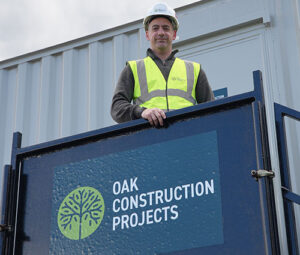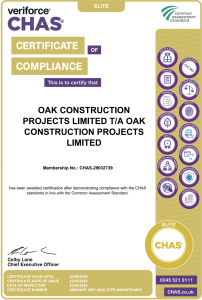Embarking on a heritage renovation project necessitates a profound comprehension of the intricacies and subtleties inherent in preserving the UK’s architectural legacy. The escalating demand for heritage conservation and restoration has propelled companies such as Henley Restoration & Remedials to a 50% annual growth rate, underscoring the criticality of adeptly managing these endeavours. Such projects demand an in-depth understanding of historic preservation and architectural restoration, ensuring that each endeavour surpasses expectations, akin to the meticulous work of heritage sector specialists dedicated to the preservation of antiquated structures.
The success of your project hinges on the proficiency of professionals adept at harmonising the preservation of historical significance with the incorporation of contemporary functionality, thus elevating the building’s heritage value. By prioritising heritage renovation, historic preservation, and architectural restoration, your project will significantly contribute to the UK’s extensive cultural heritage.
Key Takeaways
- Heritage renovation requires a deep understanding of historic preservation and architectural restoration.
- Expert navigation of heritage renovation projects is crucial to preserving the UK’s architectural heritage.
- Companies like Henley Restoration & Remedials have achieved significant growth in the heritage restoration sector.
- Heritage renovation projects must balance historical significance with modern functionality.
- Collaboration with experienced heritage building designers can mitigate complexities and ensure compliance with historical integrity standards.
- Prioritising heritage renovation, historic preservation, and architectural restoration is essential for contributing to the UK’s cultural heritage.
- Sustainable design practices can optimise energy efficiency and reduce a heritage building’s environmental impact.
Understanding the Significance of Heritage Renovation in British Architecture
Heritage renovation embodies a multifaceted challenge, necessitating profound comprehension of a structure’s cultural and historical essence. Initiating a heritage renovation endeavour mandates a meticulous consideration of the edifice’s cultural conservation, ensuring the preservation of its intrinsic features and materials. The role of building refurbishment and renovation services in safeguarding the integrity of antiquated structures is paramount. It is imperative to collaborate with specialists, such as Centene Construction, who possess expertise in heritage building restoration and conservation.
Oak Construction Projects’ engagement with historic edifices underscores the imperative of preserving their cultural significance alongside their physical integrity. The cultural worth of historic structures resides in their capacity to forge a link with our ancestral heritage, endowing us with a sense of continuity and identity. Collaborating with specialists who grasp the significance of cultural conservation ensures that your heritage renovation project is executed with the utmost sensitivity and reverence for the edifice’s historical narrative.
The Cultural Value of Historic Buildings
Historic structures transcend their physical form, serving as custodians of cultural and historical significance. The framework for assessing a building’s significance is segmented into four categories: communal value, aesthetic value, evidential value, and historic value. This comprehension facilitates a deeper appreciation for the imperative of cultural conservation within heritage renovation endeavours.
Modern Preservation Requirements
Contemporary preservation mandates and the legislative framework in the UK are instrumental in shaping the heritage renovation process. The UK is home to approximately 500,000 listed buildings, each safeguarded by legislation due to their historical importance. Engaging with specialists who are conversant with these mandates ensures that your heritage renovation project adheres to all pertinent legal stipulations.
Legislative Framework in the UK
The legislative framework in the UK delineates a clear pathway for heritage renovation projects. The formalization of ‘significance’ within UK conservation policy was achieved through the 1946 and 1947 Town and Country Planning Acts, establishing the legal status of listed buildings. This understanding enables a more adept navigation through the intricate heritage renovation process, ensuring that your project is executed with the necessary sensitivity and respect for the edifice’s historical narrative.
Essential Components of Heritage Building Assessment
In the realm of heritage conservation, a meticulous evaluation of the historic edifice is paramount. This entails scrutinising the edifice’s structural integrity, material composition, and overall condition, alongside its cultural and historical importance. Restoration specialists collaborate with clients to guarantee that each assessment is exhaustive and precise. Oak Construction Projects exemplifies this by prioritising the comprehension of a building’s heritage value in crafting a bespoke conservation and restoration strategy.
An exhaustive heritage building assessment encompasses a historical significance evaluation, a critical factor in gauging the repercussions of proposed alterations. Historic England advocates for conservation practices that prioritise routine management and maintenance to avert extensive repairs, thus representing the most cost-effective method of preserving heritage assets. Heritage conservation reports serve as invaluable tools, offering profound insights into the edifice’s historical context, current state, and potential restoration requirements. For further information on the heritage building renovation process and its stipulations, visit heritage conservation resources.
Key aspects to consider in heritage building assessment include:
- Reuse of original materials to prevent waste and promote authenticity
- Compatibility of new materials with the asset’s historic fabric
- Clear justification for replacement of historic materials
- Proportionate level of detail in the heritage assessment, as stated by the National Planning Policy Framework (NPPF)
Collaboration with seasoned restoration specialists and adherence to best practices in heritage conservation are essential for the success and sustainability of your historic building renovation endeavour. Stratus9’s proficiency in heritage asset management and conservation offers indispensable guidance throughout the journey.
Advanced Techniques in Historical Preservation
Embarking on a heritage renovation necessitates an exploration of advanced preservation methodologies. This encompasses traditional material conservation, where authentic materials and methods are employed to restore original features. Oak Construction Projects stands out for its expertise in this domain, utilising skilled craftsmen to safeguard the integrity of historic structures.
Integration of modern technology is equally pivotal in preserving historical edifices. Henley Restoration & Remedials exemplifies innovative approaches to preservation, illustrating how cultural conservation can be realised through advanced techniques. By amalgamating traditional methodologies with contemporary technology, the preservation of heritage buildings is ensured, maintaining their architectural and historical integrity for posterity.
Key Considerations for Historical Preservation
- Utilizing correct cleaning techniques to prevent damage to historic building materials
- Incorporating modern amenities while preserving historical integrity
- Complying with local regulations and preservation guidelines
Adopting these advanced preservation techniques contributes significantly to the cultural conservation of heritage buildings. This ensures their longevity and continued relevance, enhancing their architectural restoration and supporting the local economy through preservation efforts.
Planning Your Heritage Renovation Project
Embarking on a heritage renovation project necessitates a profound consideration of the building’s historical significance, cultural value, and physical state. Oak Construction Projects’ expertise in planning such projects underscores the imperative of a balanced approach, harmonising preservation objectives with contemporary demands and expectations. Centene Construction’s experience in managing heritage restoration projects further accentuates the critical role of meticulous planning.
The initial stages of planning involve a thorough assessment of the property’s historic importance and its adaptability post-alterations. This evaluation is pivotal in determining the scope of permissible modifications and in identifying the requisite consultants. For instance, the distinction between Grade 1 and Grade 2* listed buildings necessitates the engagement of different specialists. The planning phase is characterised by extensive negotiations and documentation, aimed at achieving consensus with planning and conservation authorities.
Key considerations for heritage renovation projects include:
- Replacement of features necessitates a written ‘impact assessment’ for even minor decisions
- Extensions can be appended to heritage buildings provided they are subservient to the primary dwelling
- Contemporary, lightweight designs with substantial glazing are often preferred in extensions to honour the integrity of the original structure
- Utilisation of local materials such as flint or Cotswolds stone is recommended for new constructions or extensions, based on regional characteristics
As you embark on planning your heritage renovation project, it is imperative to be cognisant of the potential costs and challenges. The preparation of a heritage management plan can incur costs ranging from £6,000 to £16,000, contingent upon the estate’s size and complexity. Natural England offers up to 50% grant funding towards the eligible costs of preparing a heritage management plan for land of outstanding scenic, historic, or scientific interest in England. Collaborating with experienced professionals and meticulously planning your project will ensure a successful refurbishment, renovation services, and heritage conservation. This approach will preserve the property’s historical essence and charm while integrating modern amenities and functionalities.
Overcoming Common Heritage Renovation Challenges
Embarking on a historic building renovation necessitates an awareness of potential hurdles. Restoration experts frequently encounter difficulties in procuring materials from the correct era, with a staggering 60% of them facing such obstacles. Unforeseen structural issues, such as timber decay or subsidence, complicate 40% of restoration endeavours at their outset.
Engaging with seasoned restoration teams, akin to Oak Construction Projects, is imperative. Their profound experience in heritage renovation is invaluable. Stratus9 underscores the significance of a deep understanding of the restoration process and the capacity to adapt to unforeseen challenges for project success. For further insights into the complexities of heritage building restoration, visit heritage building restoration challenges.
Key challenges in heritage renovation encompass:
- Material sourcing complexities
- Building regulations compliance
- Budget management strategies
By grasping these challenges and collaborating with seasoned restoration specialists, your heritage renovation project can be completed efficiently, within budget, and to superior quality standards.
Conclusion: Ensuring Success in Your Heritage Building Project
Initiating your heritage renovation project signifies a commitment to the preservation of the UK’s architectural legacy. This endeavour, through meticulous historic preservation and architectural restoration, revitalises historic edifices and enriches the cultural tapestry of your locale.
Statistical evidence underscores the significance of pre-1919 structures in the UK’s economic landscape. Approximately 142,000 retail, hospitality, and commercial enterprises occupy listed buildings, highlighting their enduring relevance. Such preservation not only safeguards historical integrity but also fosters future development.
Oak Construction Projects takes immense pride in contributing to this collective mission. Collaborating with clients, conservation experts, and other stakeholders, we strive to ensure the enduring viability of the UK’s architectural heritage. Our joint endeavour celebrates the historical and cultural importance of these structures, whilst adapting them to contemporary requirements.
FAQ
What is the importance of heritage renovation for preserving the UK’s architectural heritage?
The intricacies of heritage renovation underscore its pivotal role in upholding the UK’s architectural legacy. This meticulous endeavour ensures the perpetuation of cultural and historical significance within the nation’s historic edifices. By meticulously preserving the original attributes and materials, the renovation process guarantees the architectural heritage’s integrity for posterity.
How does Oak Construction Projects ensure the quality and sensitivity of their heritage renovation projects?
Oak Construction Projects boasts a cadre of adept professionals, each committed to the preservation of the UK’s architectural heritage. Our profound comprehension of historic preservation and architectural restoration enables us to navigate the complexities of heritage renovation with utmost precision and delicacy. This ensures that every project surpasses client expectations.
What is the importance of a comprehensive building assessment in the heritage renovation process?
A detailed building assessment is paramount in uncovering the distinctive attributes and requirements of each historic edifice. This evaluation encompasses an examination of the structure, materials, condition, and historical importance, laying a robust foundation for the renovation process. Our team collaborates with clients to guarantee that each assessment is exhaustive and informed.
How does Oak Construction Projects integrate modern technologies and techniques into heritage renovation projects?
Oak Construction Projects employs cutting-edge methodologies in historical preservation, including the conservation of traditional materials, the integration of modern technologies, and structural reinforcement techniques. This forward-thinking approach enhances the durability and integrity of historic structures, ensuring their continued relevance and functionality across generations.
What are some of the key considerations when planning a heritage renovation project?
The planning of a heritage renovation project necessitates a meticulous consideration of the building’s historical significance, cultural value, and physical state. Our team at Oak Construction Projects collaborates with clients to devise a comprehensive strategy that harmonises preservation objectives with contemporary demands and expectations. This ensures the preservation of the building’s original essence while incorporating modern conveniences and functionalities.
How does Oak Construction Projects overcome the unique challenges associated with heritage renovation projects?
Heritage renovation projects are often beset by unique challenges, ranging from material sourcing complexities to compliance with building regulations and effective budget management. At Oak Construction Projects, our extensive experience in addressing these complexities ensures the timely completion of projects within budget and to the highest standards of quality. Our deep understanding of the heritage renovation process and our adaptability to unforeseen challenges are critical in delivering projects that exceed client expectations.








